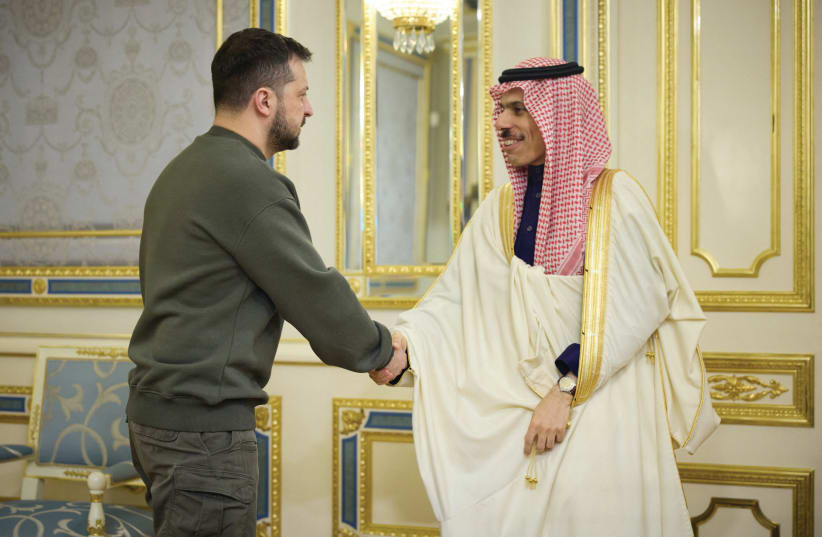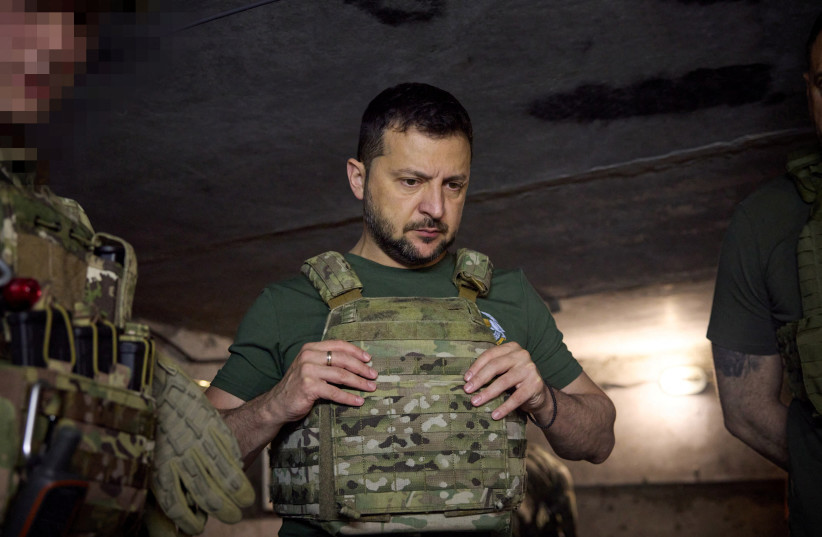While Russia’s war continued to grind on in Ukraine, the world’s attention briefly shifted in May 2023 to an unexpected location for peace negotiations – Saudi Arabia. The kingdom hosted peace talks among Western countries, Ukraine, and key developing nations such as India and Brazil, to discuss President Volodymyr Zelensky’s peace plan. This gathering, which excluded Russia, further underscores Saudi Arabia’s rising influence and indicates increasing global support for Ukraine.
The summit in Jeddah brought together senior officials from around 40 countries, making it a significant diplomatic effort. What made this event even more noteworthy was the participation of members of the Global South, some of whom had close ties with Russia during the conflict. Notably, China is made its debut in such a forum, despite its close relations with Russia. Saudi Arabia’s growing influence is prompting engagement from nations previously hesitant to join peace talks.
This was the inverse of how China played a role in securing a historic deal between Iran and Saudi Arabia in March 2023. Russia’s absence underscored the diplomatic challenges it faces as it lacks the ability to secure wide international support for its war against Ukraine.
Saudi Arabia’s involvement in Ukrainian affairs did not happen overnight. The Kingdom’s relationship with Ukraine dates back to 1991 when the latter gained independence from the USSR. In the year 2000, Saudi Arabia showed greater interest in strengthening bilateral ties, particularly in agricultural and economic sectors.
A close partnership with Ukraine aligns well with the Saudi government’s Vision 2030, a strategy focused on diversifying the country’s economy and boosting non-oil exports. Ukraine’s agricultural prowess presents an opportunity for the Kingdom to address risks with food security, as Saudi Arabia is heavily dependent on importing much of its food supply from abroad.
Key to that is a strong partnership with Ukraine, which was the kingdom’s second-largest supplier of wheat in 2021. The relationship with Ukraine is a far easier one to manage than the one with Russia. The latter brings a lot of diplomatic baggage from its war in Ukraine and a lack of faithfulness on Russia’s side, especially regarding oil cooperation.
Russia continues to tray blockading Ukrainian grain exports
Russia’s continued efforts to blockade Ukrainian grain exports endanger food security – not just for Saudi Arabia, but for millions of people across Africa and Asia – are top of mind for policymakers across the Middle East and beyond.
Beyond economic cooperation, the military-industrial complex is also witnessing joint ventures between the two countries. The development of the Hrim-2 short-range ballistic missile in Ukraine was reportedly funded secretly by Saudi Arabia with a $40 million investment. In return, the kingdom gained access to critical missile technology which boosted Saudi Arabia’s position as a significant defense partner for Ukraine, with the kingdom becoming a primary importer of Ukrainian weaponry.
Saudi Arabia’s extensive collusion with Russia in cutting oil production, to benefit the latter’s advantage, has previously raised tensions with the United States. Last year, the kingdom’s decision to coordinate oil production cuts with OPEC Plus, a group that includes Russia, sparked displeasure from the White House. This move helped prevent a decline in oil prices, safeguarding Russian oil revenue, which ran contrary to US efforts to undercut Russia’s position, which is key to funding its aggression in Ukraine.
Despite their historically strong relationship, signs of strain have now surfaced between Russia and Saudi Arabia. Reports indicate that Russia has been surpassing its agreed-upon oil production levels, causing frustration and discontent among the Saudis.
For the past six years, the leaders of both countries collaborated closely to exert control over the global oil market. The Saudi-Russian oil alliance revolved around the shared objectives of bolstering oil prices and maximizing export revenue. But the situation changed dramatically with Russia’s full-scale invasion of Ukraine in 2022. The war has shifted the dynamics of their relationship as Russia now appears more willing to accept lower oil prices to increase its oil sales, especially to major consumers like China and India. The additional revenue is crucial to Russia’s ability to fund its ongoing war efforts. This will only likely lead to further strain in the future between both countries.
Saudi Arabia and Russia have also been on opposing sides in the Syrian civil war. In 2015, the Saudis urged Russia’s ally, Iran, to agree to the removal of President Bashar Assad as a condition for any resolution to the conflict in Syria. However, as time passed, the reality set in that flipping Syria away from Iran’s influence was an unrealistic goal.
In a shift towards pragmatism, Saudi Arabia and other nations came to accept the limitations of their influence in Syria. Instead of pushing for regime change, the Saudis pursued a more pragmatic approach.
This culminated in the surprising appearance of Assad at the Arab League summit in May 2023. This marked the end of a concerted effort to block the reintegration of the Syrian dictator and his country back into the political sphere of the Middle East. Saudi Arabia’s growing engagement with Iran likely lessens the worry about needing to be on friendlier terms with Russia for stability in the region.
The kingdom has traditionally been cautious in balancing its ties with Russia, given their shared oil interests. However, recent developments have propelled Saudi Arabia to expand its relationships beyond the Middle East, with China being its largest trading partner and even restoring relations with Iran – an agreement brokered by China.
Saudi Arabia’s increasing role in Ukrainian affairs indicates a broader trend of countries in the Middle East seeking to diversify their alliances. The region’s states have realized the importance of not solely relying on one dominant partner, such as the US. As a result, they are attempting to secure diverse alliances, even with China, as a counterbalance in their dealings with Washington.
Moreover, Saudi Arabia’s involvement in hosting peace talks and facilitating prisoner exchanges between Russia and Ukraine is showcasing its desire to extend its diplomatic reach beyond traditional roles. The kingdom is positioning itself as a mediator and convening power, not just a back channel dialogue facilitator. The peace talks, even if slanted in Ukraine’s favor, present a favorable stage for Saudi Arabia’s continued growth as a diplomatic powerhouse.
No matter the outcome, Saudi Arabia has emerged as a winner from this summit, showing that in the long term it will continue to strengthen ties with Ukraine and the West.
It is Ukraine, after all, that is fighting to protect the Western world and the global order that has kept the world safe since WWII.
The writer is a freelance journalist and an editor at Euromaidan Press. His writing has been featured in the Atlantic Council, Center for European Policy Analysis, Harvard Ukrainian Research Institute, Politico, The National Interest, and the Wilson Center, among other places.

